The Big Read: 'Rat pack' holds keys to significant improvement for Coyotes in 2020-2021 season
Armstrong, Tocchet believe team's fourth- and fifth-year players' have more to give
Welcome to the AZ Coyotes Insider newsletter. I generally publish stories four to six times per week (some of them free). By subscribing, you’ll be supporting independent, accountable journalism. Subscribe now so you won’t miss a story.
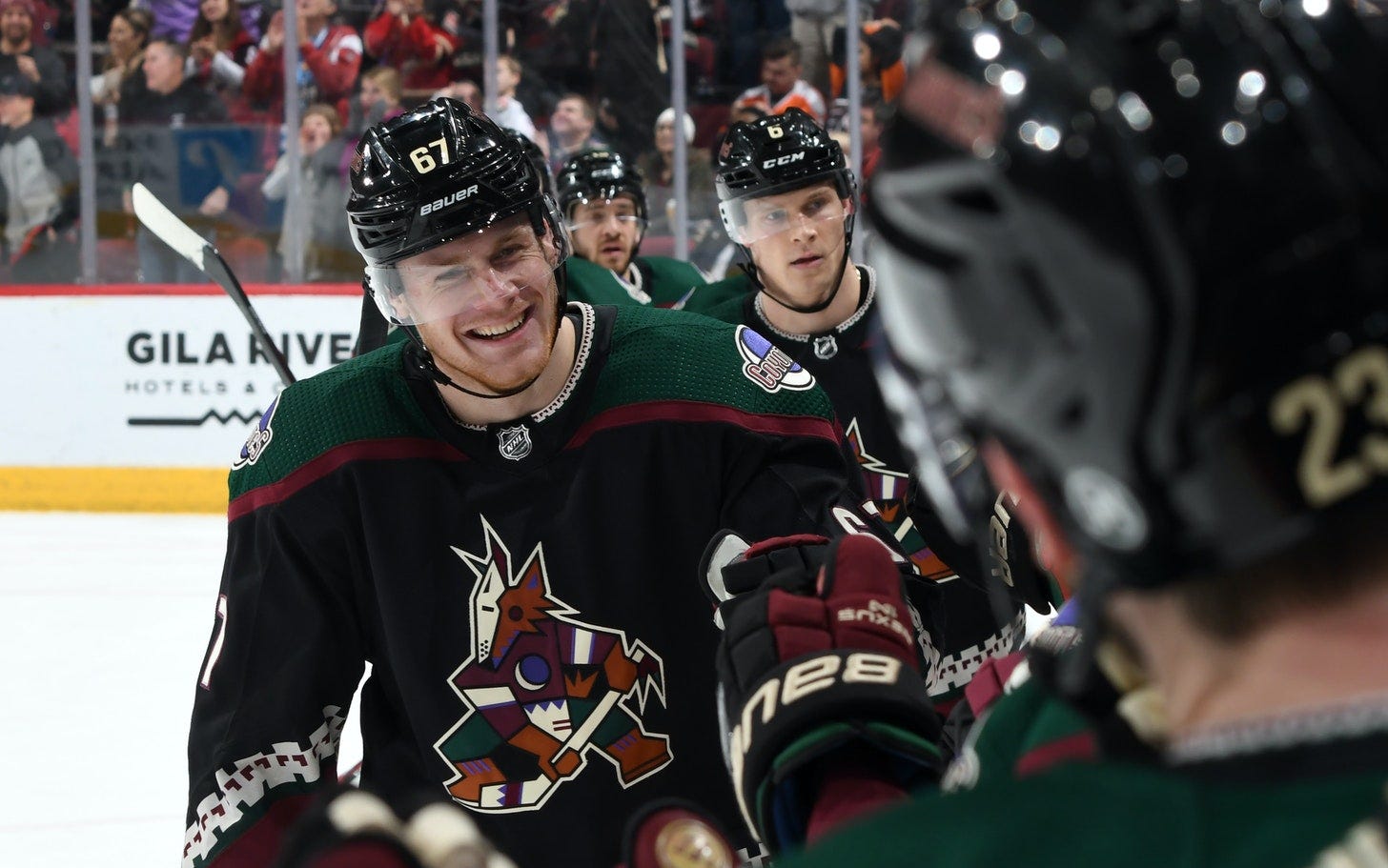
Rick Tocchet has a knack for marketing. It was the Coyotes coach who first uttered the phrase “scratchin’ and clawin’” that became the team’s popular tagline for the past two seasons. Tocchet struck gold again this week when the discussion turned to the Coyotes’ fourth and fifth-year core players.
“They're the rat pack,” Tocchet said. “A bunch of talented guys that are the heartbeat of our team.”
There will be no attempt here to link each of the six Coyotes in question with each of the famed entertainers of the 1960s who helped transform Las Vegas into an entertainment destination. If somebody from the Coyotes marketing department wants a head start on some new merchandise, however, a photo of Clayton Keller, Jakob Chychrun, Nick Schmaltz, Christian Dvorak, Lawson Crouse and Christian Fischer in front of the Gila River Arena sign, or in front of Alex Meruelo’s Sahara Las Vegas casino could be creative gold.
Sales of that merchandise will fare far better, of course, if the rat pack can achieve its goals.
I have written several stories this offseason discussing how the Coyotes can improve on their three-year upward trajectory, which included ending an eight-year playoff drought last season.
I wrote about the veterans who might have an extra dose of motivation as they head into the final year of their contracts; a group that includes the coaching staff.
I dove into Oliver Ekman-Larsson’s unique motivation this season after a tumultuous offseason.
I stated the obvious before the playoffs when noting that the Coyotes need more from Phil Kessel, a need that still applies.
I have examined the Coyotes’ advantage in goal, even in a realigned Pacific Division.
I have examined Barrett Hayton’s big opportunity, bolstered by an international playing experience, and I have explored the quest of the always insightful Conor Garland to become an even bigger point producer.
I even looked at how the three, bottom-six forward additions, Johan Larsson, Tyler Pitlick and John Hayden, could help with better physical play and strong forechecking and puck possession skills.
If the Coyotes are to take another step forward and secure a second straight postseason berth in a year where only the traditional top 16 will make it, however, the rat pack holds the keys.
“I think it comes down to really taking hold of the process,” Coyotes GM Bill Armstrong said. “It’s making sure that you get your rest. It’s making sure that you train right, you eat right, every aspect of the game. Hockey has changed a lot in that it’s a 24/7 job now. It demands everything that you have and playing in the NHL and being one of the top players is probably one of the hardest things that these guys will ever do in their life.”
Given his extensive background in scouting and player development with the St. Louis Blues, Armstrong has seen this process play out a hundred times before. He watched it happen for Vladimir Tarasenko, Jaden Schwartz and numerous other Blues prospects.
“They get past that third year and all of the sudden they go from being that guy who’s not a rookie or a young guy any more, but the guy that’s going to lead the way and be a difference maker, game in and game out, to get the team into the playoffs,” Armstrong said. “It happens at different times for players. With some guys, it’s going into their third year and with some guys it’s going into their fifth year. There’s that line where your players learn to train harder and smarter in the summer and they come back and they’re accustomed to the grind of the regular season to get into the playoffs.
“These guys took a step last year in making that climb to get over Nashville (in the qualifying round). That's a start for the group. Now they need to build off of that and take the next step and be a team that is consistent all the way through; be a team that climbs right into the playoffs. Know the grind is coming. Know the back-to-back nights are coming. Expect that and excel and fight through it.”
Tocchet has zeroed in on this group for more than a year when discussing the team’s trajectory, but he agreed with Armstrong that now is the time for a quantum leap.
“The accountability, the preparedness, the consistency, the compete, there has to be more from that group in every area,” he said. “They have improved every year and you’ve got to give them credit for that, but there’s more we need from that group. It's time to take the bull by the horns and really be accountable in those areas.”
If that isn’t enough motivation, here’s one more factor to consider. Armstrong is in his first year as the Coyotes GM. He is not wed to any of the plans that John Chayka crafted before him. Every player is under evaluation every season, but that microscope will be a little more intense this season as Armstrong decides which players fit his team’s identity and which do not.
“We’re a young team and we have got to cross that line now,” Armstrong said. “It’s up to this group. It’s a commitment by everyone to bring their A-game and push that envelope so this organization can be the best that it can be. There’s just a large amount of players in this situation that can have that impact.”
Clayton Keller
With an eight-year, $57.2 million contract kicking in this season, Keller will be in the spotlight whether he wants it or not. The expectations for his game have increased along with his payout.
“I’m ready for this,” Keller said. “This is what I have worked all my life for, to be a great player. I want that responsibility.”
There are signs that it is more than lip service. Keller has beefed up to 173 pounds and he said he feels faster after an offseason training with former Coyotes strength and conditioning consultant Tommy Powers, who does private training with a number of NHL players through his company, Empowers Performance, including Keller, Phil Kessel and the Minnesota Wild’s Matt Dumba.
Tocchet has often noted how hard Keller works on and off the ice, and in the video room, to improve. Tocchet calls him a hockey nerd.
Keller was on pace for 20 goals and 52 points in an 82-game season, and that was an improvement over the previous season when he slipped to 14 goals and 47 points. He also played some of his best hockey in the postseason when he had four goals and seven points in nine games.
“I felt good out there and I could tell that all of the work that I did in the time off paid off,” he said of his postseason. “It felt good to produce and it really helped to score in the first game because that builds your confidence. I definitely think that is something I can build off of.”
Stats:
Production goal: Given his salary, it is reasonable to expect Keller to produce north of 60 points per season, which he did in his rookie season.
Armstrong’s take: “He helped this club get past Nashville, but the hardest thing for all young players is consistency. When (the Blues’) David Perron was coming into the league, he’d have one good game and then two games where he wasn’t so good. Over time, he learned to compete every single night in the hard areas and have success. Kells is a tremendously talented person that can create some offense. The club is looking for him to take that next step in leading by being the best player on the ice.”
Tocchet’s take: “I know he is taking some heat from some people but I see the improvement, I see the right attitude and I see the passion from Kells. He really has a lot of passion for this game and that’s so key. He wants to be a star player. He’s just got to keep doing the right things and I think he’ll achieve it.”
Christian Dvorak
It is hard to find a player who has made greater consistent strides under Tocchet than Dvorak. His production has improved. His defensive play has improved. His face-off prowess has improved. He has become a critical net presence on a team that has lacked that element, and he has even become a little more vocal with what Tocchet describes as a dry sense of humor, full of “subtle barbs.”
Dvorak was on track for 21 goals and 46 points last season, but he believes there is more in the tank.
“I want to keep improving offensively so I did a lot of skill work this summer and you always want to get stronger and faster as well,” he said. “Those were the main things but skill work was a big emphasis for me. I still think I am capable of improving every year. That’s my goal. I don’t want to put a ceiling on what I can do. I just want to keep improving every single year and I think I have been able to do that.
“I see myself as a two-way centerman. I take a lot of pride in the defensive zone and face-offs as well. I like where my game is in those regards but the part where I really want to keep improving and bring more to the table is offensively.”
One of the underrated parts of Dvorak’s well-rounded game is his shot. The Coyotes goalies will tell you it is deceptive, hard and accurate; a combination that could lead to more twine tickling in the future.
“The goalies say it’s sneaky,” Dvorak said. “It’s not like a snapshot. It’s more like a wrist shot and it throws goalies off a little bit. I also take a lot of pride in my accuracy. I really work on hitting the corners.
“Deception is a big part of it, too. I can't really say why it’s like that but I have always shot it that way. I’m not trying to change that part of it but it can always be harder and quicker in terms of the release.”
Dvorak gained valuable experience playing on the Coyotes’ top line last season, often with Taylor Hall. He hopes that experience will benefit him this season.
“Hallsy won an MVP and is a world-class player so it was pretty cool to play with him and I think I got some confidence playing on that line,” he said. “I take a lot of pride playing against those top guys, especially on the road when you’re facing the shutdown guys or the other teams’ best players.”
Stats:
Production goal: Dvorak has improved steadily each season. A season of 50-plus points seems reasonable.
Armstrong’s take: “The thing that strikes me about Christian is that he’s really a professional. He’s a pretty driven player and he wants to push this club. I would compare it a little bit to Ryan O’Reilly. O’Reilly takes that ice every day trying to get better, working on his game, always trying to perfect it and that’s one thing I see in Dvorak. He plays a solid 200-foot game, but he is always pushing the pace to make his team better.”
Tocchet’s take: “Every time we talk to other teams they want Christian Dvorak so we know we have a really good centerman and he’s only in his fourth year which is a real positive. For Devo, it’s ‘Can he get that puck and make that next play? That will make his offensive upside rise a little more, by being able to hold the puck a little longer to set up somebody or scoring that goal. That's the improvement we’re looking for from him and the arrow has been pointing in the right direction.”
Nick Schmaltz
The biggest bummer for Schmaltz last season was missing the playoffs due to a concussion suffered on a hit from Vegas’ Ryan Reaves in an exhibition game in the Edmonton bubble. He missed out on that valuable opportunity for growth and the Coyotes missed his speed and playmaking ability through the middle of the ice.
Even worse for Schmaltz, he felt like he had found his game just as the season was paused due to the global pandemic. He had three goals on the team’s final three-game road trip and he looked dynamic again after a two-month lull that coincided with the team’s slip from first place in the Pacific Division to 11th place in the Western Conference.
“I started the season off really well,” said Schmaltz, who had 35 points in the team’s first 44 games. “I thought I was playing well, making a lot of plays and we got off to a great start as a team which added to it. As the team went into a little bit of a lull, my game wasn't where I wanted it to be. It’s the toughest thing as a young player. All of the great players are able to be consistent every single night and that’s what I want to be.
“You are going to have an off night. You’re not going to be great every night but if I can contribute by just playing the right way or make sure I don’t make mistakes if I don't have my legs that night, that can help. I need to be doing as much as I can off the ice, eating right, sleeping right, getting treatment, just to make sure that’s not a problem and I’m feeling good.”
Despite a two-month lull. Schmaltz was on track for 13 goals and 53 points. He believes he has more to offer.
“I have had multiple stretches over recent seasons where I have been close to a point a game or at a point a game for 15-20 games and then you hit a wall,” he said. “If I can stay with that consistency and make little plays, produce on the power play, I think I can do more.
“The biggest thing I want to get better at is protecting the puck down low. A lot of these high-end skill guys aren't the biggest guys but they just know how to hold guys off and create that extra second where they draw an extra defender and then they open up space for their linemates. A lot of these D are heavy and have good sticks so the biggest thing I wanted to work on was getting a little stronger and being stronger down low so we can rag it a little bit; play below the goal line and hash marks a little more.
“It’s about strength and body positioning. You watch a lot of the high-end guys in (Sidney) Crosby and (Patrick) Kane, they're really good especially on their backhand. They hold onto the puck almost with one hand and use the free hand to block the stick from getting to them and then they do a quick escape. I’ve been working on that stuff. It’s the difference between having an offensive zone shift or, if you get the puck knocked off your stick, you’re backchecking and playing in your own end all night.”
Stats:
Production goal: Schmaltz is in the second seasons of a seven-year deal that carries a cap hit of $5.85 million. There are times when he will be used at center, particularly in offensive situations and given his past production, it is not unreasonable to expect Schmaltz to produce between 55 and 60 points.
Armstrong’s take: “Nick is impressive in a couple ways. He has won a championship before and I think with North Dakota the year they won, he really really elevated his game to kind of push that club to the next level, to get a national championship.
“With every young player, the hard part about the NHL is when you come in and you’re good at what you’re good at, it’s almost too easy for you. A lot of times these guys like Nick, who is a highly skilled forward, have excelled at creating offense but then you learn as you go along and you make that next step, it’s also about playing a little bit of two-way hockey and defense because you’re not just going to win by playing one end of the ice. You’ve got to be successful at both ends. That’s the difference when I’m talking about that line where you go from being young to being experienced and knowing that you’ve got to play on both sides of the puck to be successful.”
Tocchet’s take: “It’s a shame that Nick didn’t get to participate in the playoffs because I think that experience really would have benefitted him. It’s a whole other level of compete and it teaches you just how much you have to elevate your game to succeed. I thought he could have helped us, especially against a team like Colorado. We needed some more juice in our offense, some more speed and he can give you that.”
Jakob Chychrun
Tocchet felt defenseman Jakob Chychrun wasn’t as impactful in the playoffs as he had been in the regular season when he had 12 goals and played much of the season as one half of what was really the team’s top pairing with Alex Goligoski after Niklas Hjalmarsson suffered a broken leg in the fourth game of the season at Colorado.
Tocchet’s main postseason takeaway was that Chychrun wasn’t as sound in his decision-making; that he was more tentative. Chychrun agreed.
“I don’t think I played my best hockey and there was, for sure, some rough patches,” he said. “Being in the bubble was different; it was an adjustment. There were some things that I talked about with Toc and we went through some video. I definitely took some lessons from it that will help me in the future.”
Chychrun had one goal and one point in nine playoff games, and he was a negative possession player whose expected goals slipped from a rate of 4.09 in the regular season to 0.55 in the playoffs.
“I thought having that time off hurt him because his game was really good and he was confident and I thought he was playing his best hockey in the regular season and then I didn’t think he had the best qualifying round or playoffs, which is part of his development because these guys haven’t really been able to be in that position,” said assistant coach Phil Housley, who coaches the defensemen. “I think he was just a little hesitant. He wasn’t taking charge. He wasn’t using his feet. He was sort of standing up. When he plays his best he’s moving his feet, he’s attacking the game and I think he was just playing on his heels.
“Obviously, he and Goose (Alex Goligoski) had chemistry in the regular season but the chemistry wasn’t there even when we got back from the pause during the scrimmages. I thought they sort of came unglued when they had been so efficient. We automatically thought when we got back together that they were going to pick up right where they left off and it just didn’t feel right and that carried into the qualifying round.”
Despite Chychrun’s small-sample struggles in the postseason, Housley saw progress last season.
“For him to go through a training camp healthy was critical to his start and all of those check marks were reached,” Housley said. “I really thought he grasped everything well and took ahold of it heading into the season and then, with the big injury for Hjalmarsson, when one door shuts another opportunity opens and Chych, because of the way he was trending in his play and being healthy, he was put up with Goose and I thought from that point he really got confidence.
“His defensive work and his stick work were really good and his explosiveness, jumping up in the play and making things happen off the rush and finding holes really propelled him as one of our offensive guys.”
Stats:
Production goal: Chychrun has proven he can be a double-digit scorer, but he can still pad his assist total above the 20 range and get into the 35-40 point range.
Armstrong’s take: “There’s lessons to be learned for young players at every stage they go through. A lot of the players that have success after that point really evaluate that experience they went through and they fix it. They approach that setting, the playoff grind, a little bit differently if they’re really good. If they're not then they’re just a good player on a bad team when it doesn't count, but the good ones go back and evaluate: ‘What I did right and what I did wrong’ and they take stock of that and usually when they approach it the next year they have that little extra fight or they're a little bit smarter, they're a little more committed.
“Chych can really firm up that backside by being one of those players that is going to play a ton of minutes in all situations and be one of our best players, game in and game out. If you look at the guys that anchor defenses on championship teams, they play a ton of minutes and they're competitive in every single area and they have an impact every single night for their club.”
Housley’s take: “I thought he really excelled in a bigger role in the regular season. He was facing a lot of top competition and a lot of speed as far as matchups went and he really made the best of his opportunity.”
Lawson Crouse
As I noted earlier this offseason, in his third full NHL season, forward Lawson Crouse recorded career highs in goals (15) and average ice time (13:35), showing as much progress as any Coyotes player under coach Rick Tocchet. While he was sent down to Tucson in his second pro season, Crouse looks like a success story of the Coyotes development system.
“I think the biggest thing for me was holding onto pucks and playing with the confidence that I can help this team win,” he said. “I just tried to approach every game with that mindset; to have that feeling and belief that you belong. That was my fourth year of playing professional hockey (one mostly in Tucson) and I have learned lots through the first three years.
“You hear the term hockey IQ a lot. Mentally, my game has come so far with just seeing the ice, seeing plays develop, realizing when you have that extra second to hold onto the puck or realizing when to get to the net. Getting to the net is one of the things I think I improved on a lot. Using my big frame to cause traffic is big, whether I get a rebound or screen the goalie or tie up a defender in front to open ice up for other players.”
Crouse talked with coach Rick Tocchet about the keys to making plays under pressure.
“Hockey happens at such a high speed that I think being calm under pressure is the key,” he said. “Toc and I have had conversations about keeping the heart rate calm. I’m the type of player that tries to work hard every shift and go full speed out there, but sometimes you need to calm down and you’ll notice those little plays open up.”
Crouse has established himself as a player who can play up and down the lineup. He has also become an effective penalty killer, a role that the Coyotes will likely need more of from him with the losses of Brad Richardson and Michael Grabner. As with several other players on the roster, however, Crouse believes he can add to his offensive game as the Coyotes try to extract about .3 to .5 more goals a game from the team to climb into the middle of the offensive pack.
“I believe I can score more, be a 20-goal guy,” Crouse said. “I scored a lot of goals as a kid. It’s funny though, everyone wants to be a goal scorer. Everyone comes out of college or juniors getting a lot of points, but it’s how you can adapt to playing in different situations while continuing to score those goals. I’m just getting my feet wet in this league and I think I can be a very impactful player. This is just the start for me.”
Stats:
Production goal: Flirt with a 20-goal season while elevating the assist number closer to the 20 range as well.
Armstrong’s take: “Crouser has made a lot of strides in his game. The one thing I like is his continued improvement in the consistency of who he is and what he’s got to bring. Every time I watch him he's gotten a little bit better and now it’s turning into big games where he has a positive effect when he’s on that ice. His scoring improved last year, he is contributing offensively in hard minutes, hard 5-on-5 minutes. He’s got to continue to put his will on the game and outwork, outhustle opponents and use that big frame of his in the nasty areas to compete and also to produce points.”
Tocchet’s take: “When you pencil him in you know what you’re going to get. There’s not a lot of highs and lows in his game where you saw them two years ago. That curve has flattened out and the graph is casually going up. The same thing I say for Christian Fischer I say for him. ‘Can he make that next play?’ Will that add three or four more goals and 10 more assists without changing his style of being a guy who goes up and down the wing, brings an abrasive style and goes to the net and is a good penalty killer, too?
“He’s a terrific kid; a low-maintenance guy. He’s got a hell of a shot, he’s got a great backhand and he can skate. He’s a give-and-go guy and he can tip a puck at the net. I don’t want to put pressure on guys to say, ‘We need this many goals from you,’ but there’s no reason he can’t improve and get a few more goals this season.”
Christian Fischer
Armstrong and Tocchet want Fischer to develop more of an NHL identity. Some of that could come with greater opportunity, something Fischer has not enjoyed the past two seasons with his ice time dropping to a career low average of 11:01 last season.
Fischer appeared in just 56 games last season, finding himself a healthy scratch more times than he ever imagined possible. It’s a role that can eat at a player’s confidence.
“It’s always tough,” Fischer said. “Every player wants to play in whatever role it may be. That’s our job and it’s tough when you don’t. You sometimes have to battle your own mind. You don’t want to be too hard on yourself but you also have to respect the decision and know that you could be better. It’s a balance.”
The same rules that apply to Crouse generally apply to Fischer. The Coyotes want him to be a north-south wing who uses his big body to hold onto pucks and make plays out of the corner, while also getting to the net for screens, tips and rebounds.
"My skating is the big thing for me,” Fischer said. “That's when I feel my best, the most confident, is when I'm moving my feet and I can get a lot of space for myself. I've been doing a lot of work on the ice with my hands, passing and shooting. You can never be too good with that stuff. Obviously, those things are how you capitalize on possessions to score goals and create offense."
Fischer signed a two-year, $2 million contract with the Coyotes in October. With the departure of five forwards (Taylor Hall, Michael Grabner, Brad Richardson, Vinnie Hinostroza and Carl Söderberg), there is a regular role there for the taking.
"It doesn't matter where I play, how much I play, I'm here for two more years to win with the Coyotes and to hopefully do something special here," he said. "I'm a very versatile guy in terms of my game, and anywhere I get put, I'm going to give it my all. That's what's gotten me to this point in my career."
Stats:
Production goals: Fischer had 15 goals and 33 points in his first full season with the Coyotes. Those numbers should set the bar.
Armstrong’s take: “Fisch is someone I know from watching him grow up and play. I remember him back when he was a 17-year-old and I have a good understanding of who he is. I think players sometimes get to a point where they hit a wall and they almost stop playing hockey and they try to play safe hockey. Fisch has got to get back to making some plays, ragging the puck. I think there is some more identity he can get in his game. He’s got to go back and refocus and get back to playing with a little more jump, a little bit more pop and making some plays. He’s a hard worker and he is someone who generally puts a lot of pressure on himself to perform.”
Tocchet’s take: “I still see a lot of myself in Fisch in the way he plays the game. He can be a net front-guy and he can be that sticky guy in the corners that makes plays. Last year, with him being out of the lineup, it wasn’t necessarily because he was playing bad. We just had a lot of options, but I do think there’s another level to his game. He knows what his identity has to be and he has the right attitude about it, the right work ethic. Now it’s about making it happen on a consistent basis.”
Follow Craig Morgan on Twitter: @CraigSMorgan




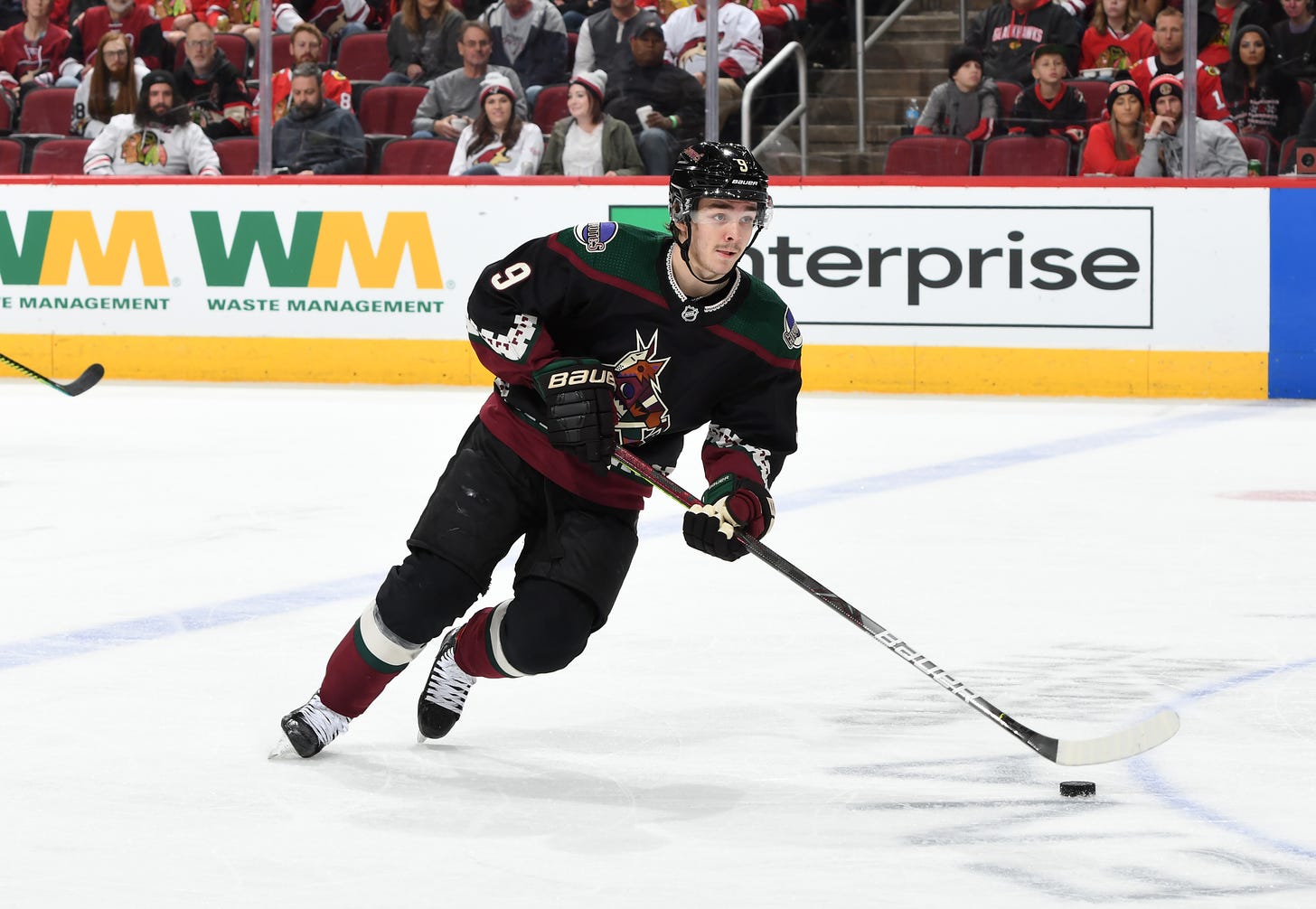

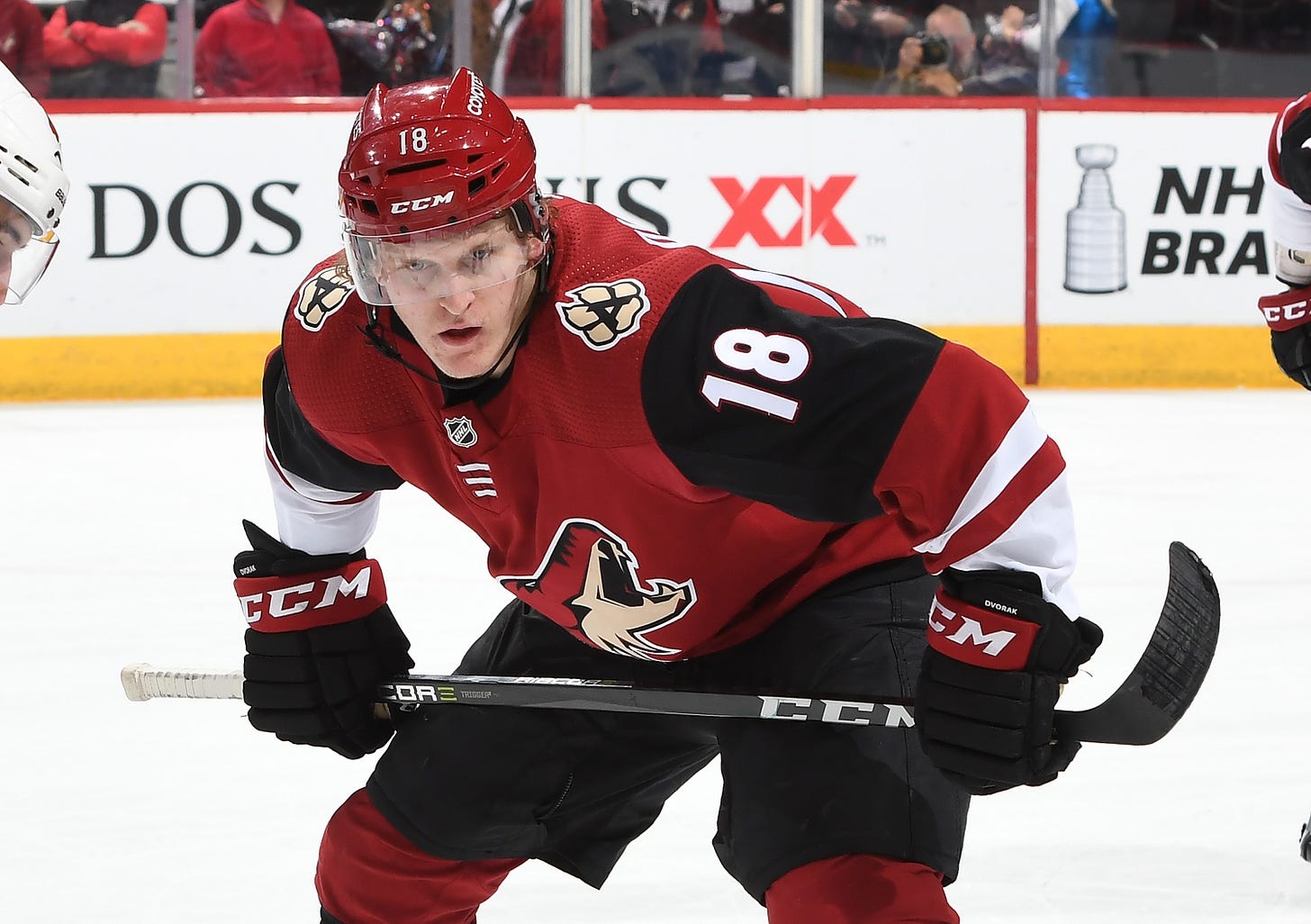

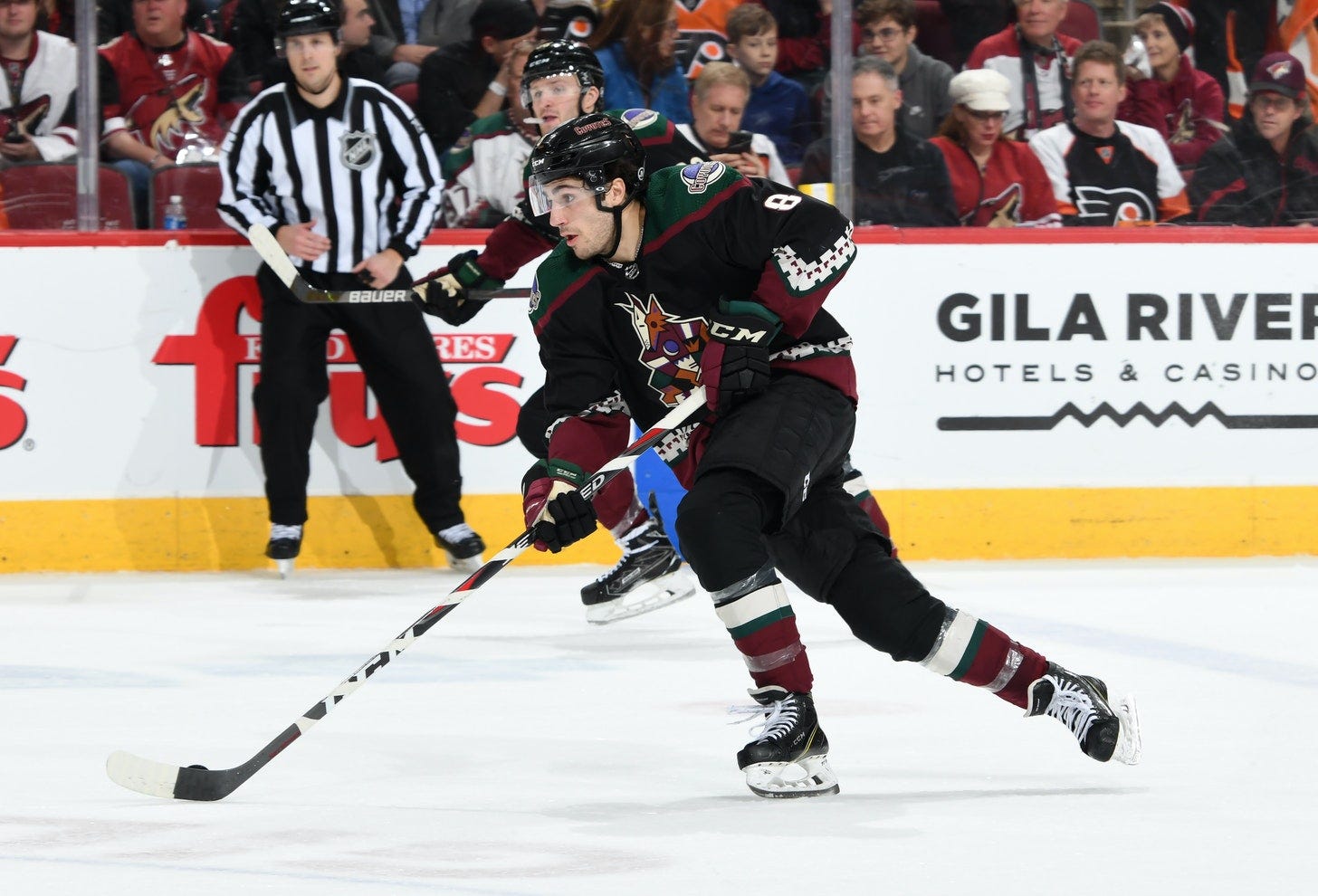

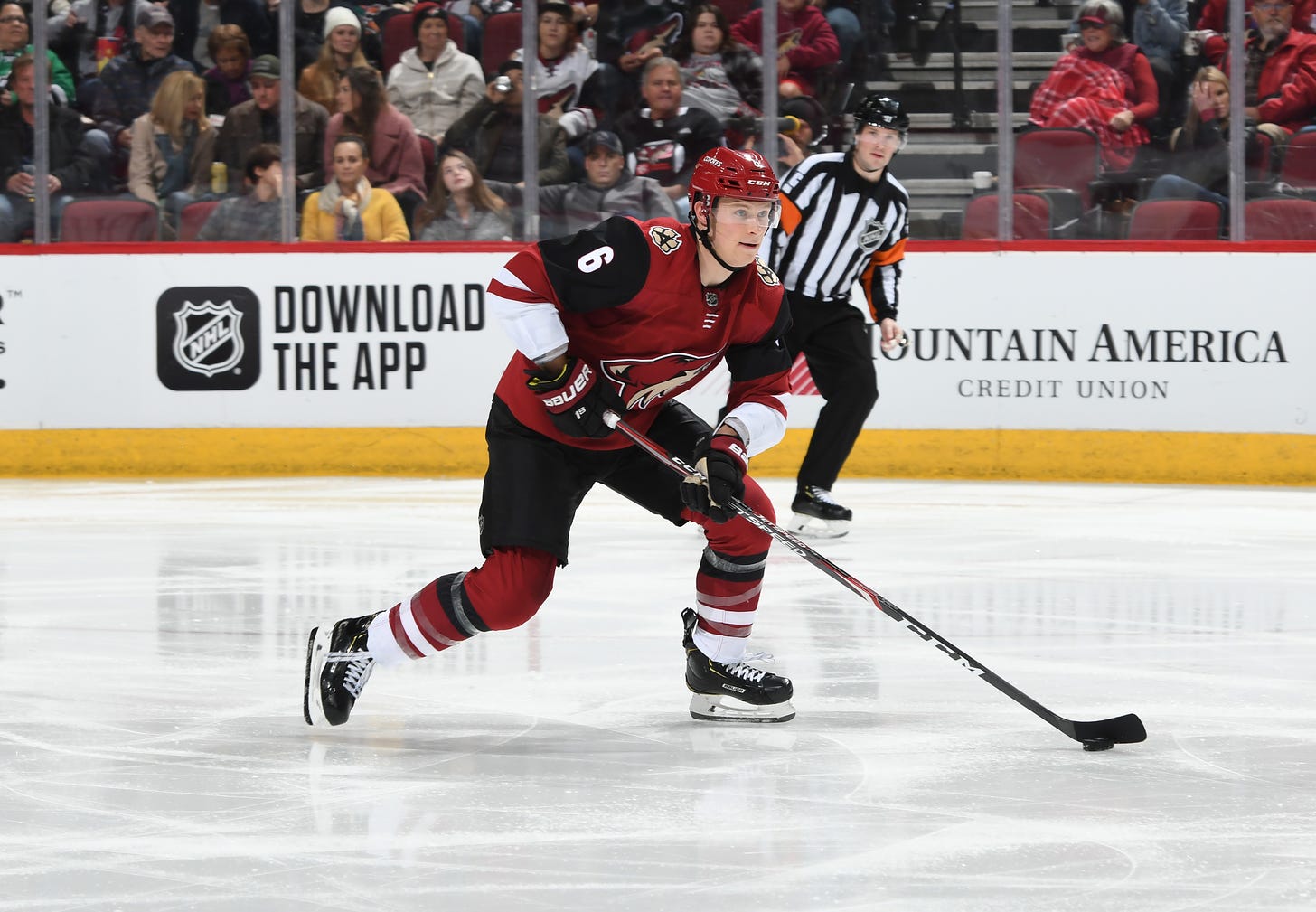

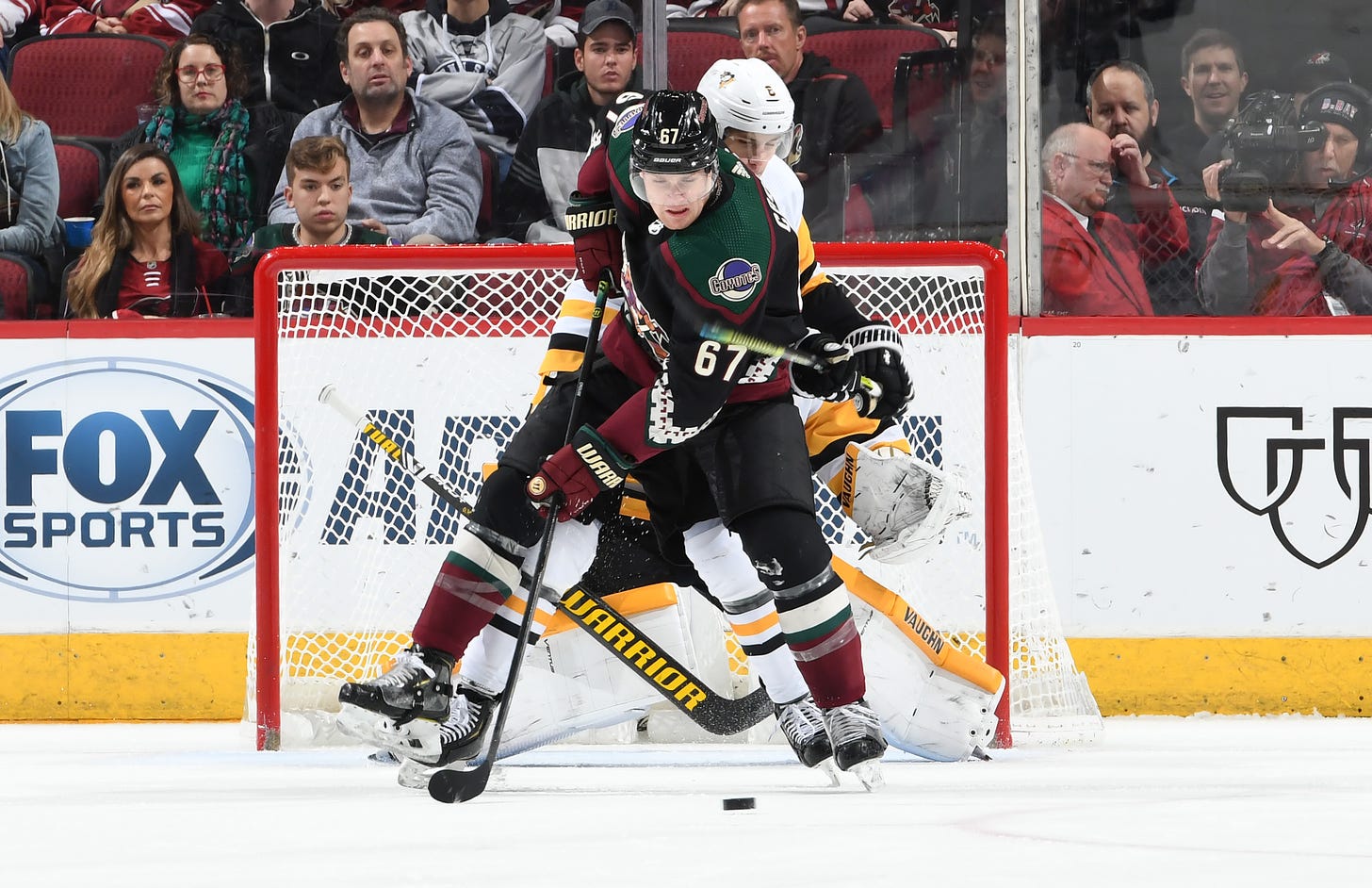

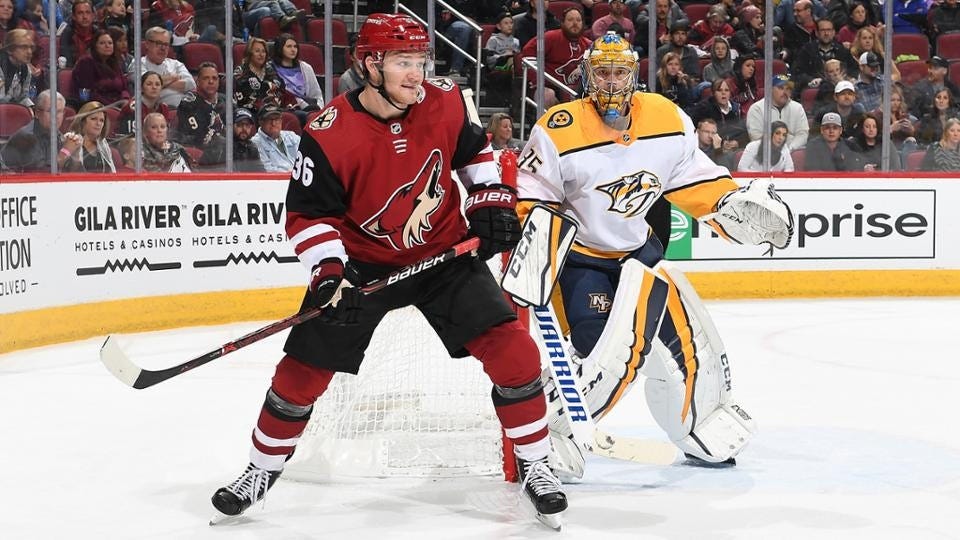


Hope springs eternal, pre-season.
Good write up Craig. Without a doubt these guys need to step up if we are to have any chance this season. But I dunno, my pessimistic side must be coming out. Seems as we get closer, I'm seeing more of the deficiencies of the team in a tougher division. And still have no confidence in our coaching. Hope I'm wrong, but I feel we are closer to a big break up and restart under Armstrong than a perennial playoff contender.
Just a small curious question - why doesnt the rat pack include Garland? He definitely feels like part of the young core and maybe the one guy who is performing most to potential of those young guys. With that said, loved the article, and hoping to see some growth from all the players on this list! (especially having just purchased a Keller RR Yotes jersey)